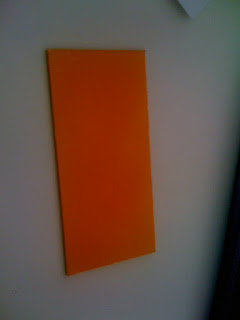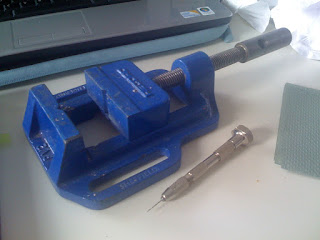So for the past 2 weeks, I have been working hard on perfecting my log model. A few things have changed along the way visually and mentally...
First thing you should know is that there is a method and order to which things must be done. This was only discovered through practice from working various logs.
Second thing you should understand is that finding the center point is crucial to the design and is the hardest thing to achieve due to an uneven edge, unsymmetrical semi circle which gives 2 different diameters at opposing ends and one flat edge (also hard to get right).
Third thing you should understand is that the tools can be limiting. This ranges from drill sizes and depth a hole can be drilled. From practicing i altered my design to work with these limits rather than working against them.
Fourth thing i hope you realize is that every cut and mark on the wood is important that i was unable to take photos of every sequence.
So without further to do, here is a wee steep by step introduction to my model:
The image below shows the trunk section i have chosen to work with. This is immature baby elm so has a pixelated grain and rough silver bark.

Before just cutting in half, careful consideration towards edge, quality of bark and terrain need to be taken into account for positioning of design features. I used masking tape to outline my 2 halves to confirm my decisions.

To get the best, vital flat edge i wait for new blades in the workshop to be installed. I use the band saw and guide the wood through by holding onto and leaning on 2 other square pieces of timber at either side of the log. Saw at a slow and steady pace.

Find the center point by measuring each edge with a ruler to find half way point of that edge. Use a set square to align them up via the flat edge and go around the log. Keep measuring, checking and altering your middle point. I found that i was only satisfied with the center point when i could find no alterations. This will take a long time but if done wrong, you need to start again or undertake drastic action.
(I had the pleasure of taking such drastic action when it became apparent that i was 5mm out with the alignment of two features. A clever technique i will share later on!)
After plenty of trials and errors to align my dial and beak insert, the simplest way is to measure and cut a template (square bit of MDF) to the exact height i wanted to drill and marked it on both opposing center points.
Once drilled, the hollowed out section meets the drilled beak insert:

I have 2 platforms and a hole that meets the drill section to still provide support to the brass inserts.

To cut the slant, the button hole needs to be drilled on a flat surface and the bark protected with masking tape. Through trial and error, i cut at a 33.3 degree angle.

This is an image of one of my earlier tests that cut through a knot. I made sure my final one did the same as without it is not as special:

I then drilled holes for the toggle switches and installed them by reducing the wall thickness and expanding the hollowed section.

So this is where i am at. I need to install the electronics(even thought the toggle switches are in place, they are not connected as they are there to stop the holes reducing in size as i have discovered, happens) and install the brass parts.
I am still deciding my brass push button as it well depend on the button i finally decide on once i have found a click i like. Sadly online shops don't have a mp3 on these...




 Before just cutting in half, careful consideration towards edge, quality of bark and terrain need to be taken into account for positioning of design features. I used masking tape to outline my 2 halves to confirm my decisions.
Before just cutting in half, careful consideration towards edge, quality of bark and terrain need to be taken into account for positioning of design features. I used masking tape to outline my 2 halves to confirm my decisions. To get the best, vital flat edge i wait for new blades in the workshop to be installed. I use the band saw and guide the wood through by holding onto and leaning on 2 other square pieces of timber at either side of the log. Saw at a slow and steady pace.
To get the best, vital flat edge i wait for new blades in the workshop to be installed. I use the band saw and guide the wood through by holding onto and leaning on 2 other square pieces of timber at either side of the log. Saw at a slow and steady pace.
 I have 2 platforms and a hole that meets the drill section to still provide support to the brass inserts.
I have 2 platforms and a hole that meets the drill section to still provide support to the brass inserts.
 This is an image of one of my earlier tests that cut through a knot. I made sure my final one did the same as without it is not as special:
This is an image of one of my earlier tests that cut through a knot. I made sure my final one did the same as without it is not as special: I then drilled holes for the toggle switches and installed them by reducing the wall thickness and expanding the hollowed section.
I then drilled holes for the toggle switches and installed them by reducing the wall thickness and expanding the hollowed section. So this is where i am at. I need to install the electronics(even thought the toggle switches are in place, they are not connected as they are there to stop the holes reducing in size as i have discovered, happens) and install the brass parts.
So this is where i am at. I need to install the electronics(even thought the toggle switches are in place, they are not connected as they are there to stop the holes reducing in size as i have discovered, happens) and install the brass parts. Stefano came round and personally spoke to me about my final year project.
Stefano came round and personally spoke to me about my final year project.

 I drilled in holes where the beak would be;
I drilled in holes where the beak would be; and carved in both halves the detailing i had chosen to do;
and carved in both halves the detailing i had chosen to do; This is the result;
This is the result; Not too keen after all that! My issues is with this feature shown. I like the shape of the log and the fact that it is cut in half. I think i would make the product a little longer in my final model as well.
Not too keen after all that! My issues is with this feature shown. I like the shape of the log and the fact that it is cut in half. I think i would make the product a little longer in my final model as well. 2. Getting the PCB board ready for laser cutting;
2. Getting the PCB board ready for laser cutting;
 The laser cut cuts away the spray paint exposing the copper. The tracks remain concealed under the spray paint.
The laser cut cuts away the spray paint exposing the copper. The tracks remain concealed under the spray paint.







